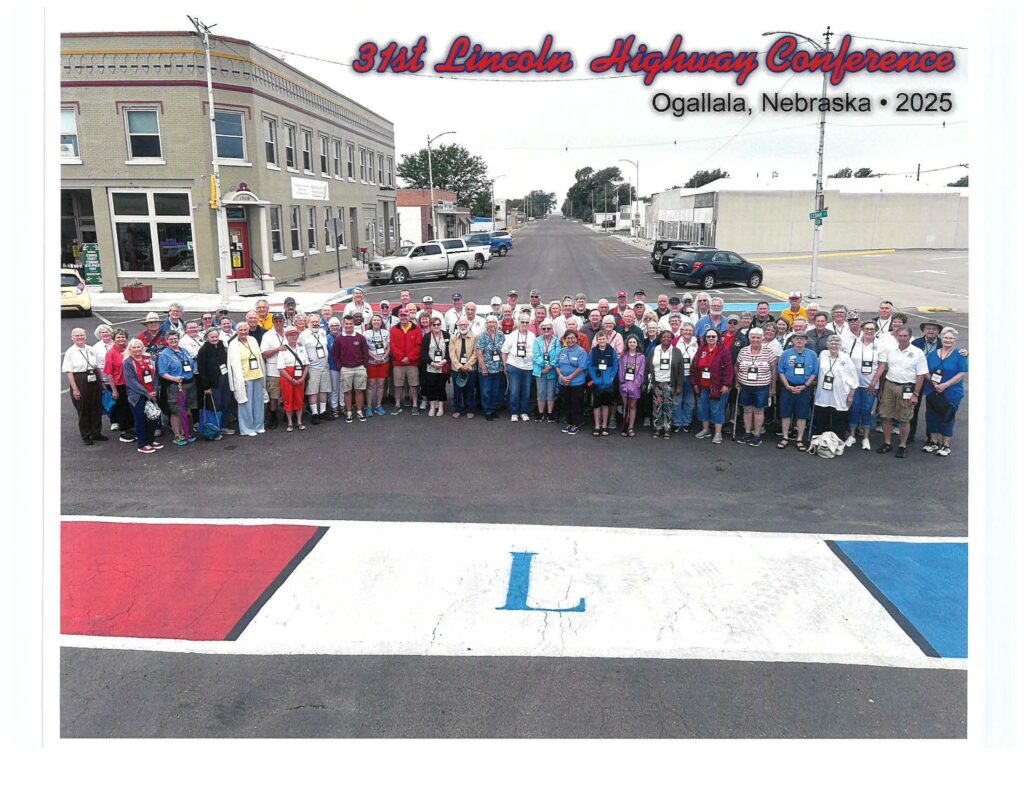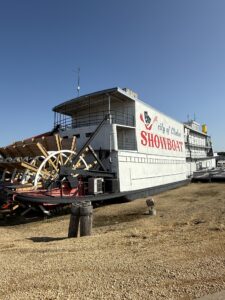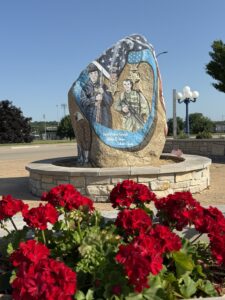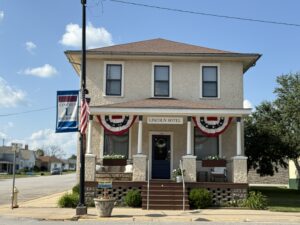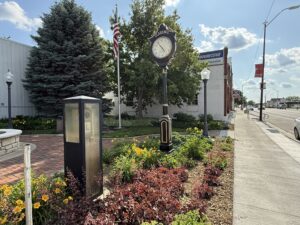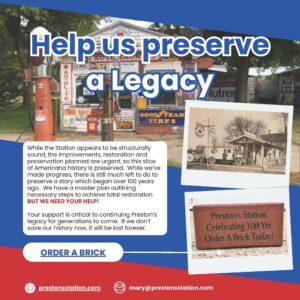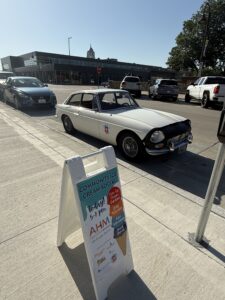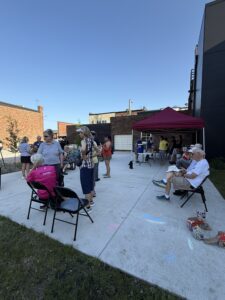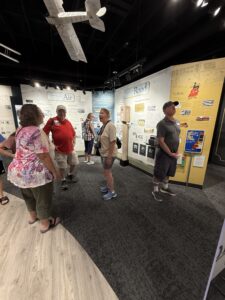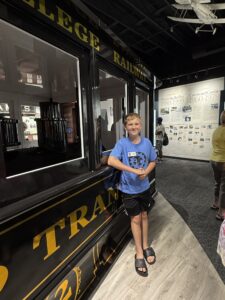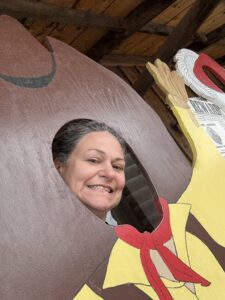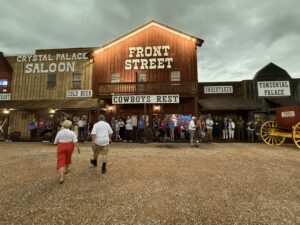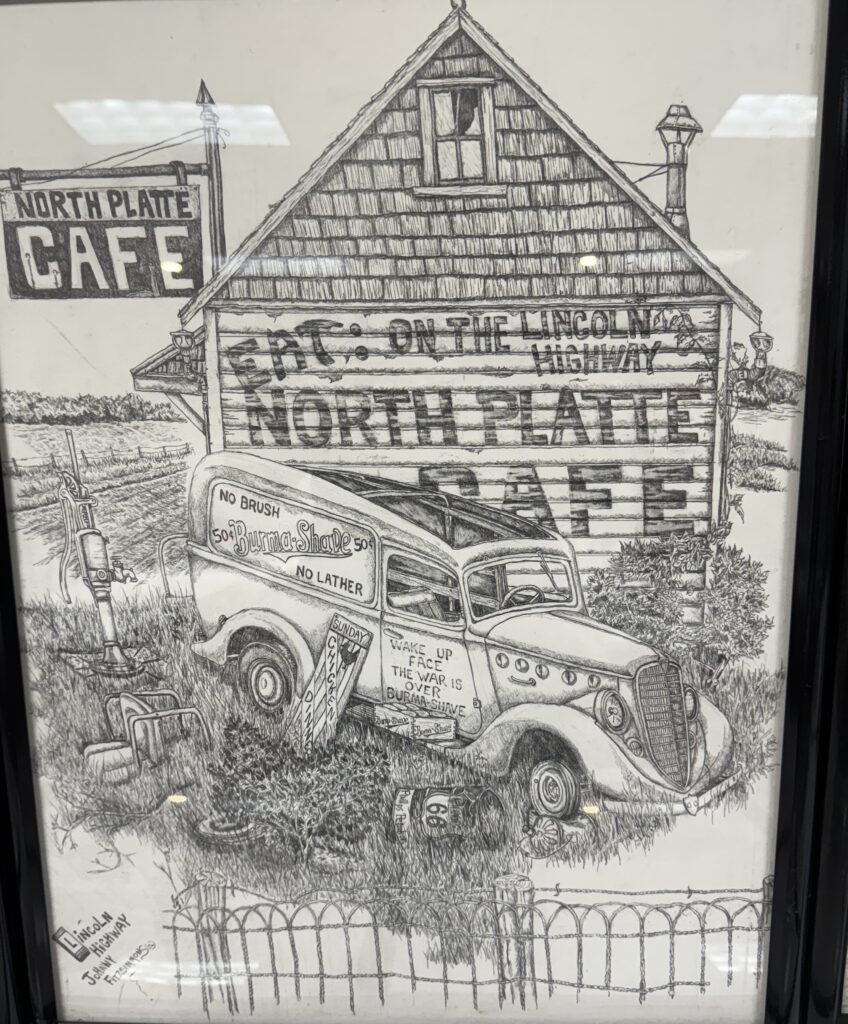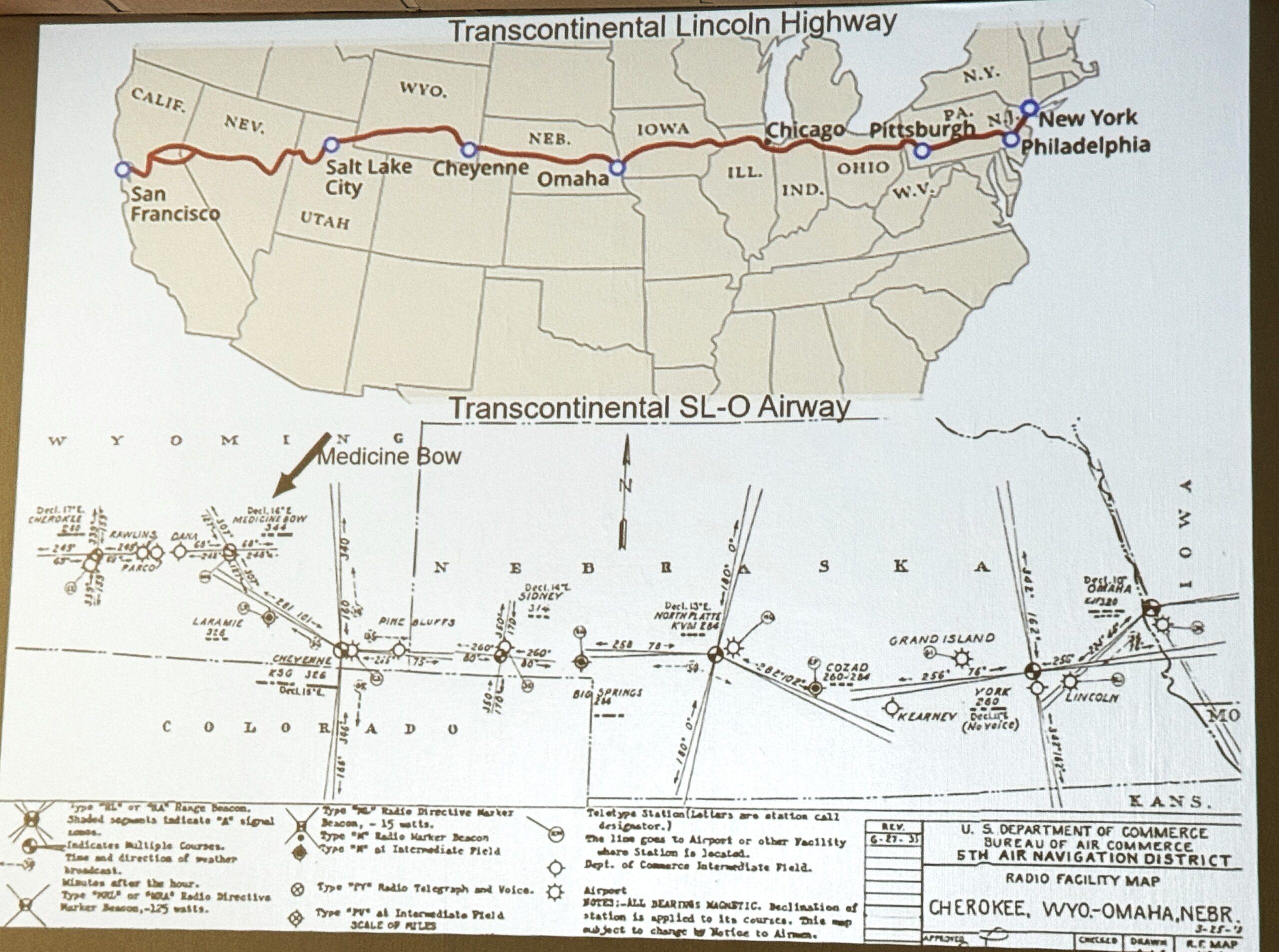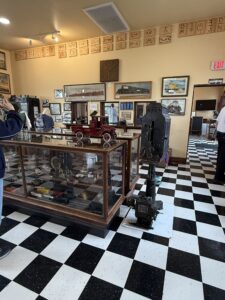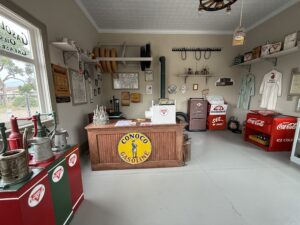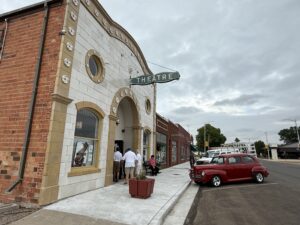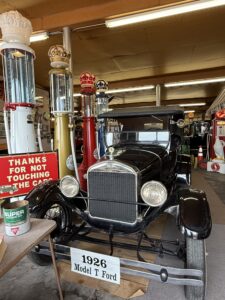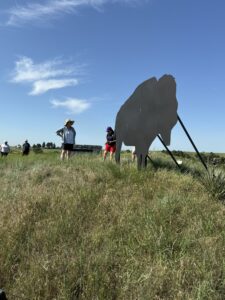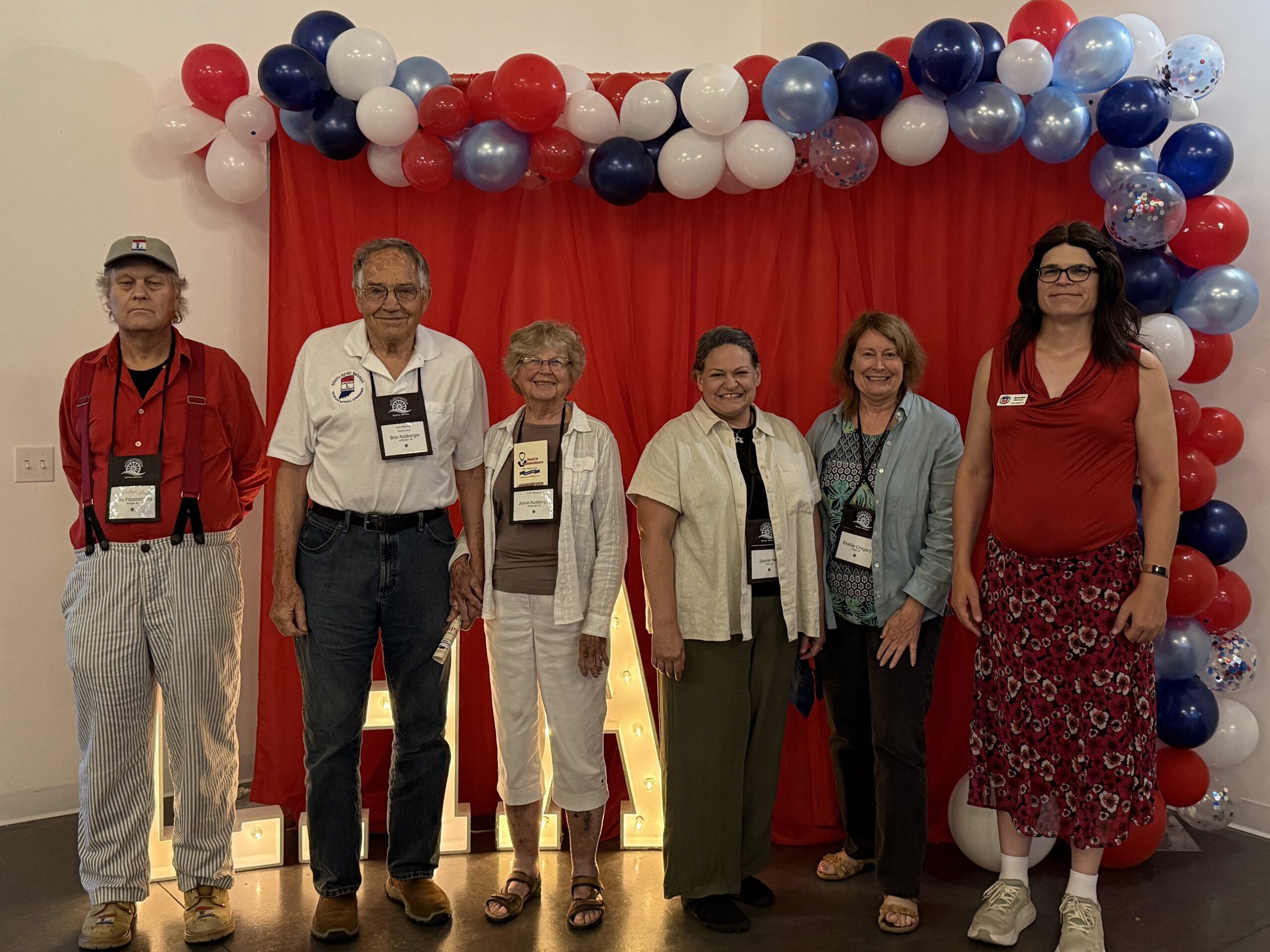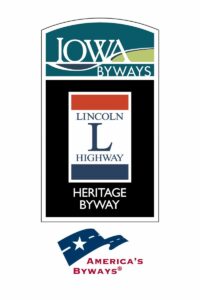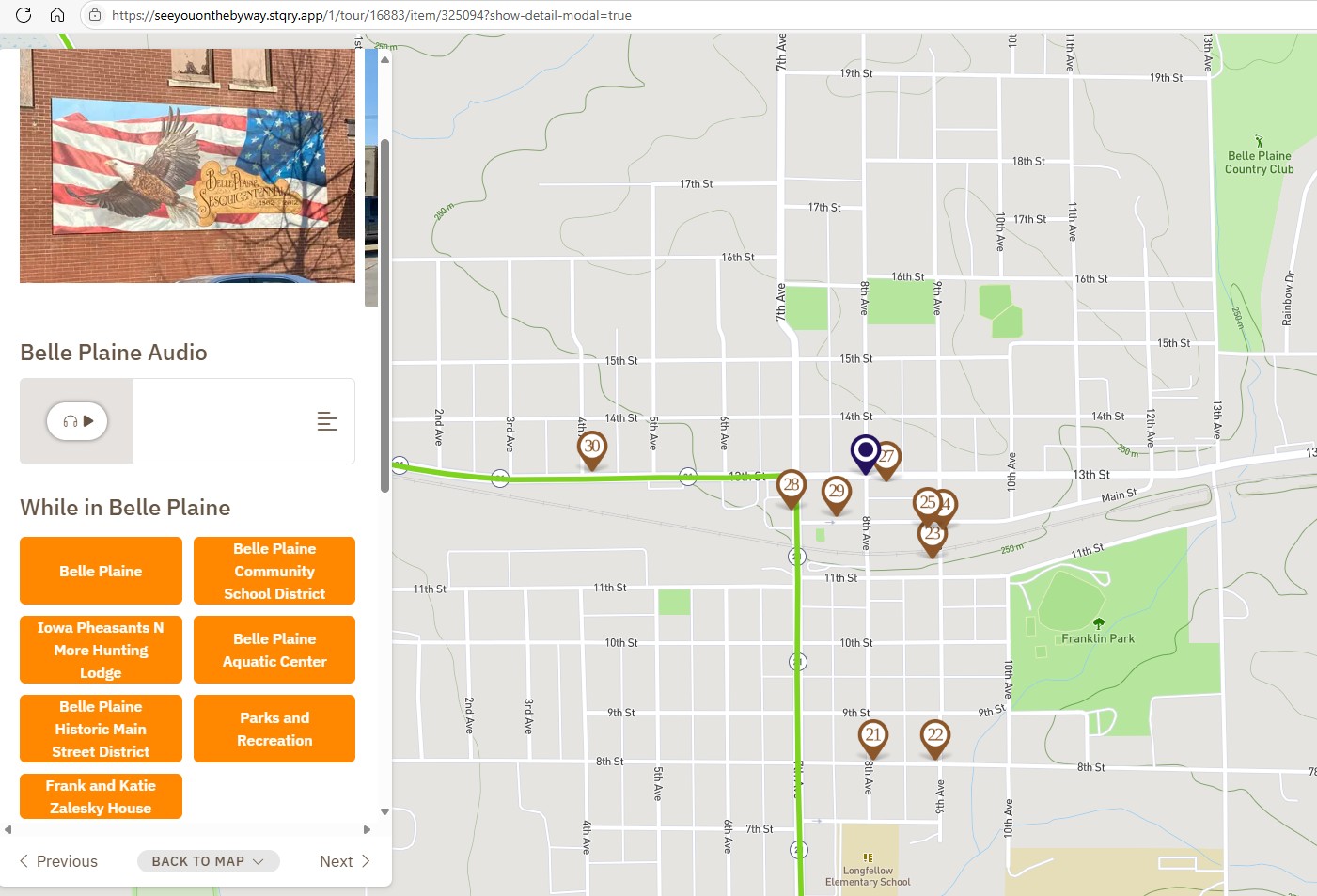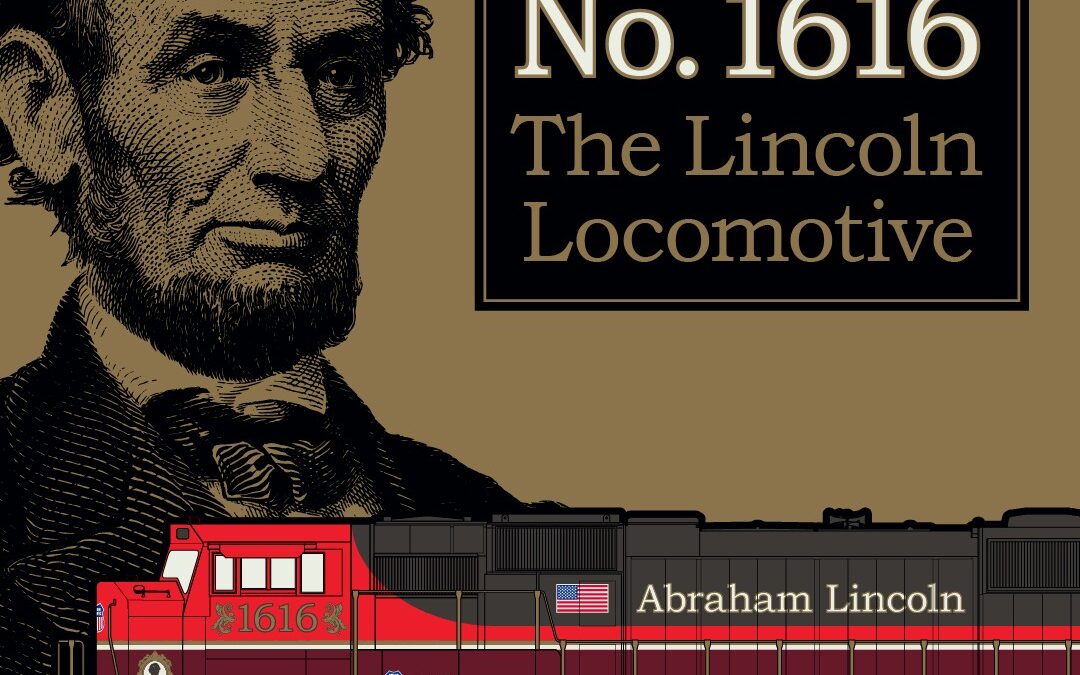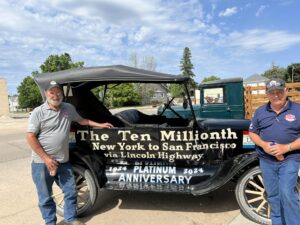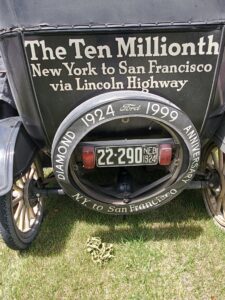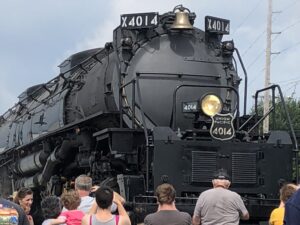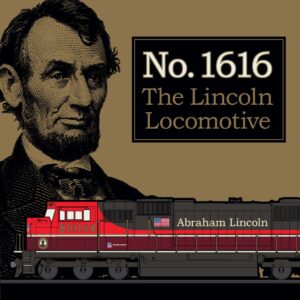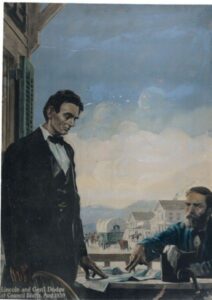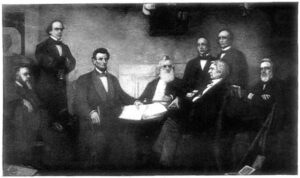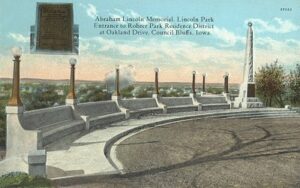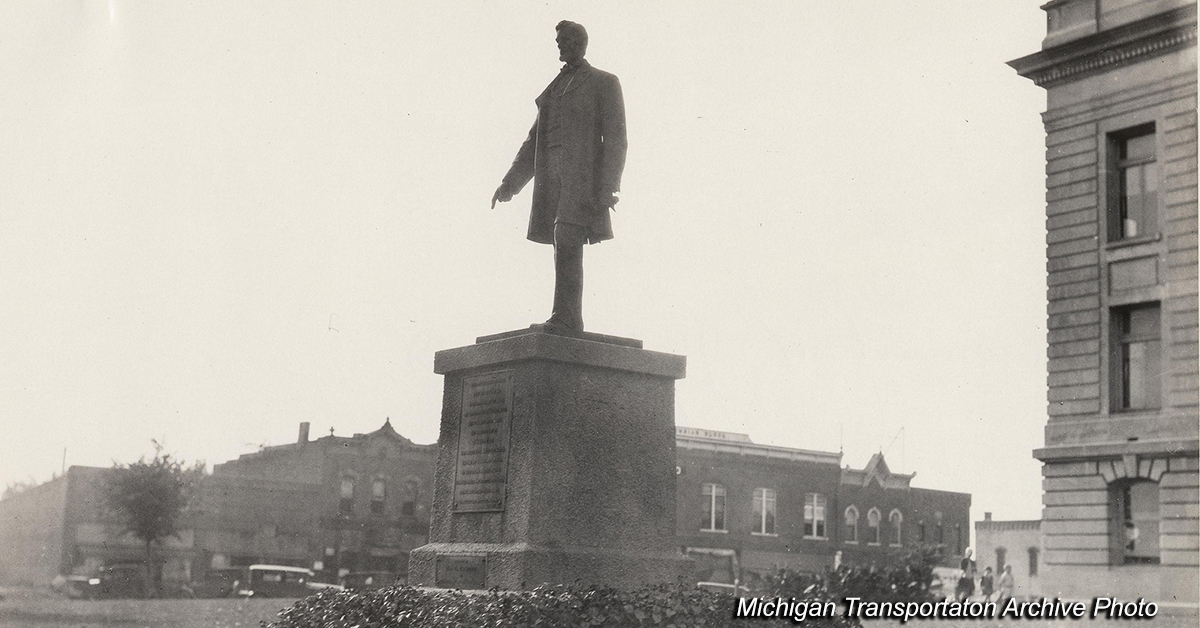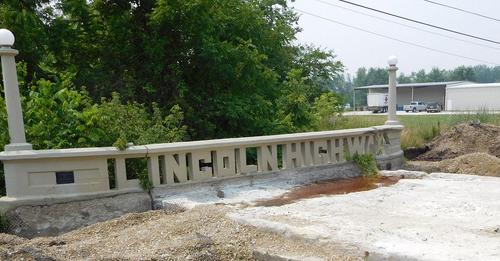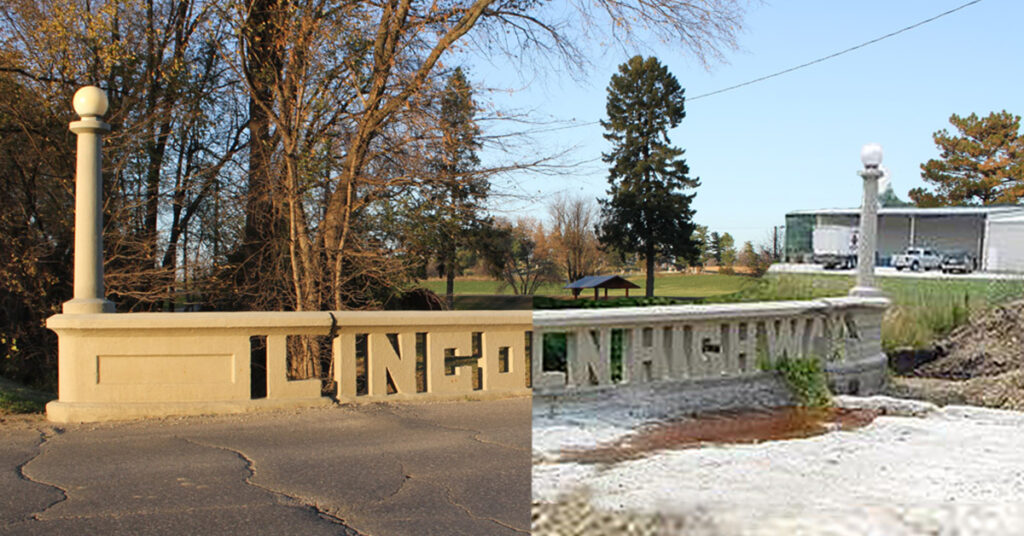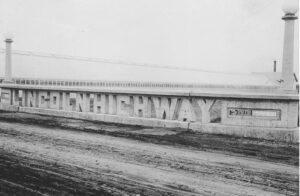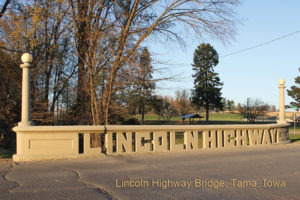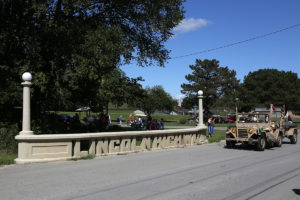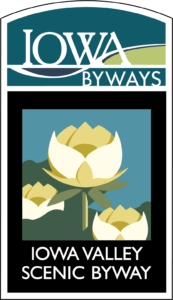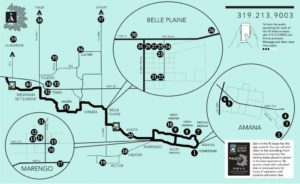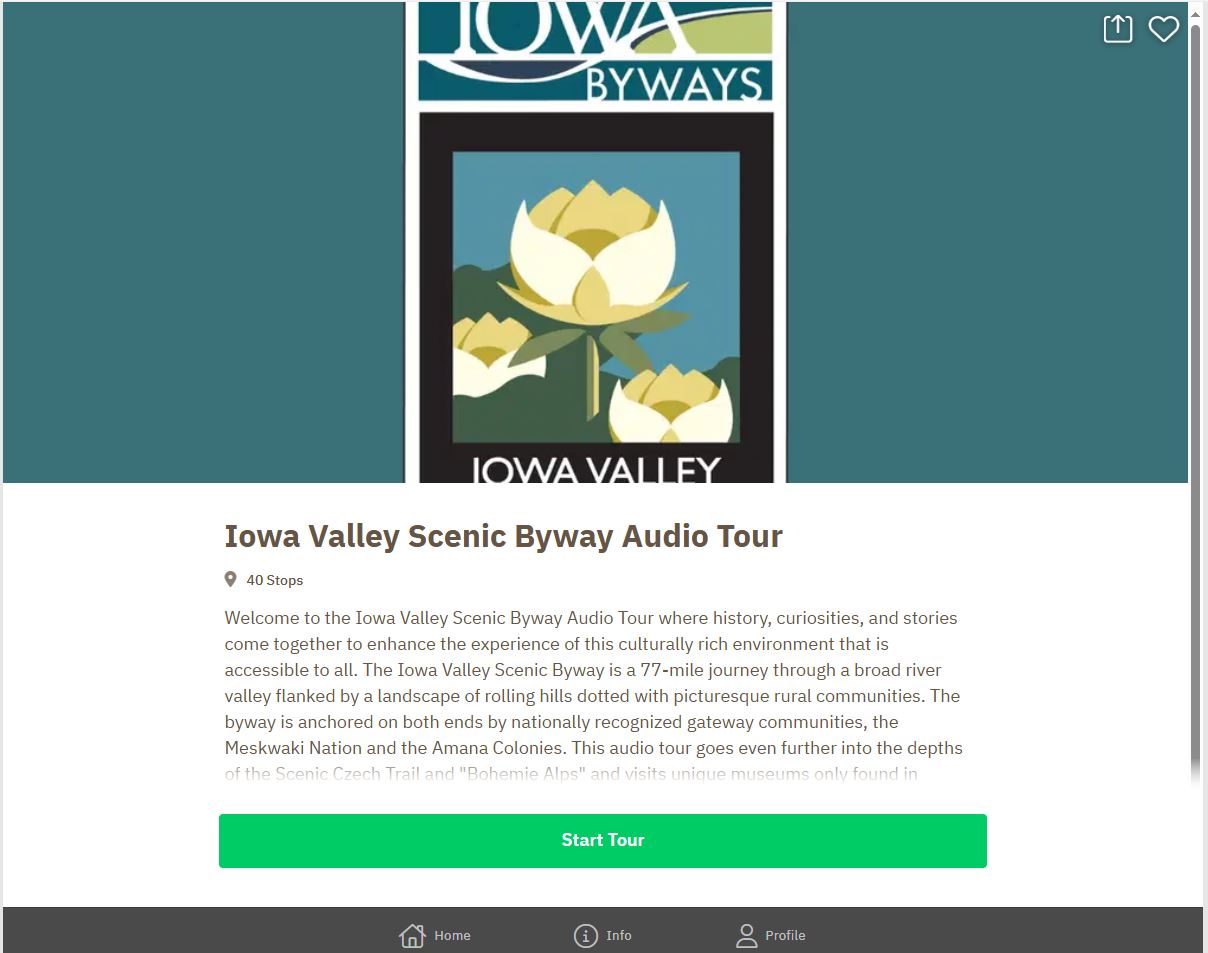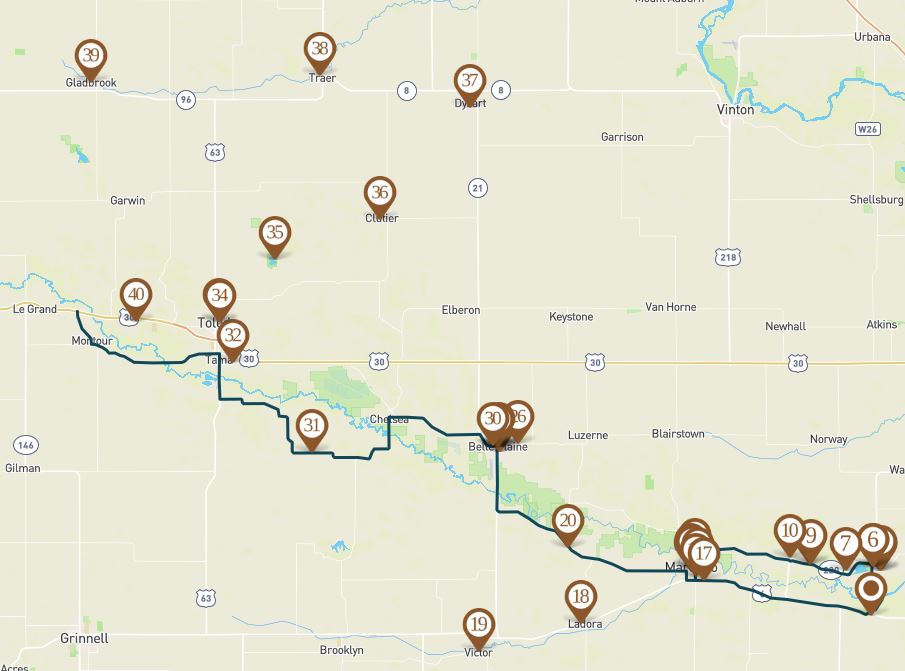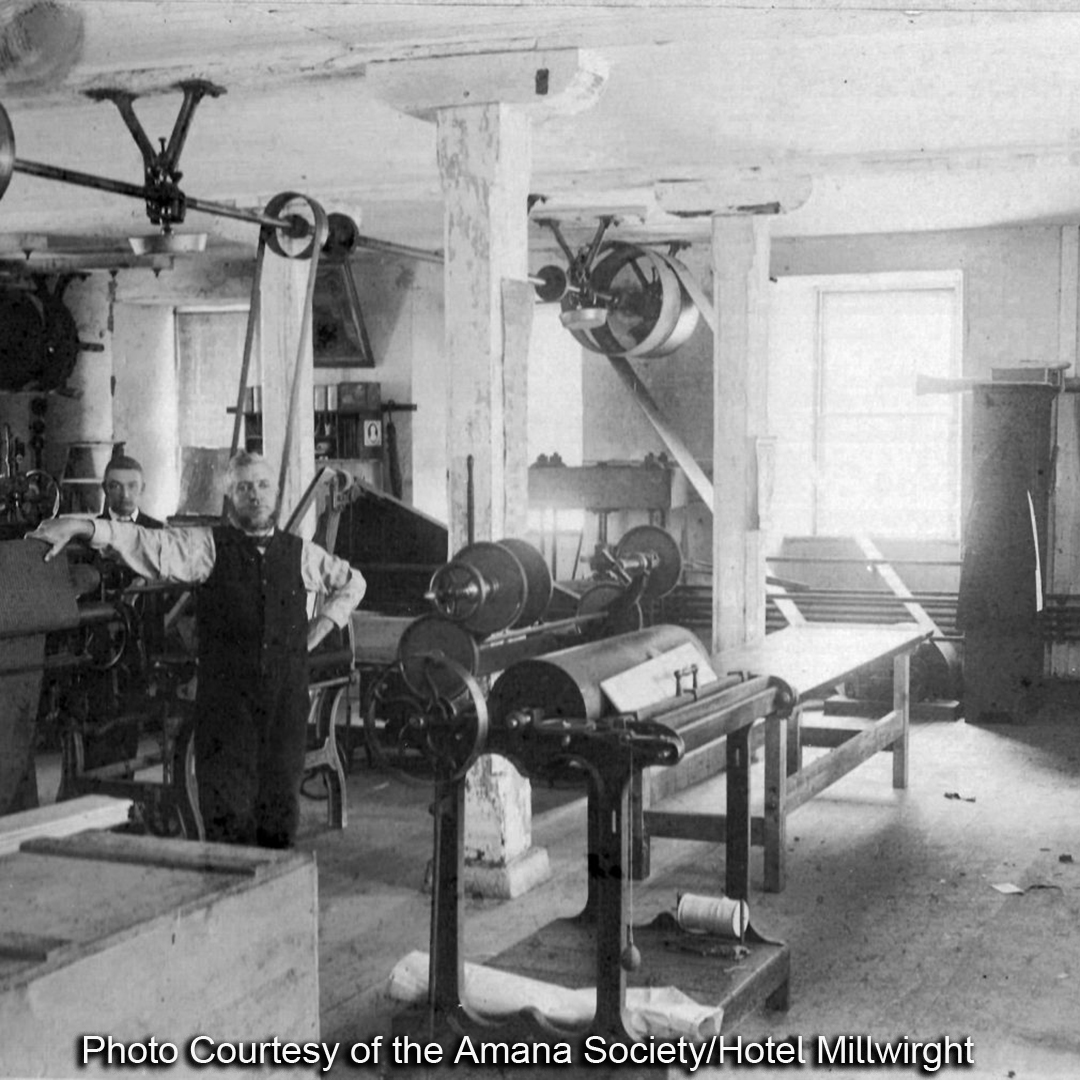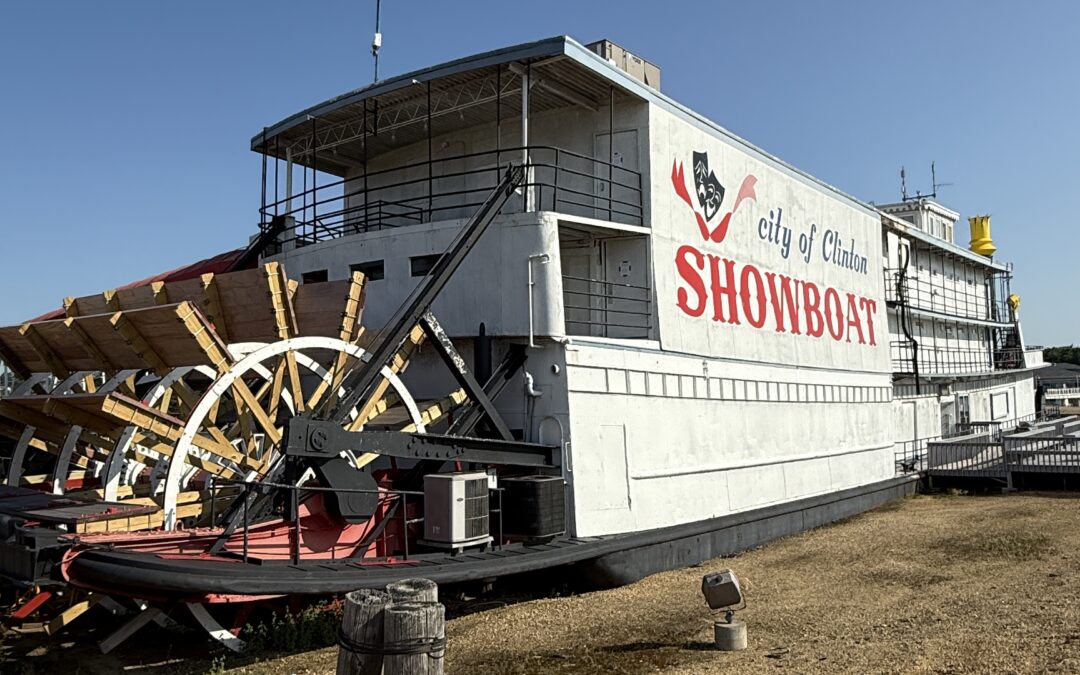
2025 LHA Middle Third Tour Goes Through Iowa
Jeanie and Shellie joined Bob and Joyce Ausberger from Greene County, Jennifer Morrison from Linn County, John Fitzsimmons (Lincoln Highway Johnny) from Boone County, and Alan Campbell formerly from Clinton County, at the Lincoln Highway Association Conference in late June. Photo was taken in Julesburg, Colorado. High School students painted the roads prior to our visit! Before the conference, the Lincoln Highway Association Middle Third Tour came through Iowa.
June was a busy month for travel for the byway staff. Shellie and Jeanie presented the study on National Historic Register Properties along the Lincoln Highway Corridor to an audience of professionals at the Preserve Iowa Summit in historic Muscatine. Then, Jeanie met the Lincoln Highway Association Middle Third Tour in Clinton, Iowa at the Clinton Area Showboat Theatre where the attendees from all over the United States watched the full four episodes of Road Trip Iowa across the Lincoln Highway Heritage Byway. Thank you Iowa PBS!
The Historic Lincoln Hotel in Lowden, the city of Clarence, and Lisbon welcomed the tour the first day with an overnight in Cedar Rapids. Youngville Cafe, Preston’s Station National Historic District, Tama, Montour, and the Reed-Niland Corner hosted the second day with an Ice Cream Social at the Ames History Museum ending a rainy day. The last day in Iowa was the fullest with a train ride at the Boone & Scenic Valley Railroad, a visit to the Mamie Eisenhower Museum, lunch with Bob & Joyce at the Lincoln Highway Garden in Grand Junction, a trip up the Carillon Bell Tower in Jefferson, and a tour around the Harrison County Welcome Center. We could have filled up another week in Iowa, if they would have let us!
The Ames History Museum, along with Prairie Rivers of Iowa hosted the Middle Third Tour with an Ice Cream Social. Ames residents enjoyed asking about the Lincoln Highway tour.
Made it to Front Street in Ogallala!
Enjoyed a “Canteen” inspired meal at the Lincoln County Museum
Left: Lincoln Highway Johnny brought his artwork to display in the Book Room.
Right: Map of the Transcontinental Airway Route.
Those are the few pictures taken while at the Lincoln Highway Association Conference. There was networking, promoting, story-telling, and planning for the future of the Lincoln Highway. More people know about the Lincoln Highway Heritage Byway after this tour and this Conference. Until next year in York, PA for a BIG 250th Celebration of America, see you on the byway Lincoln Highway Association Members!
It only takes a few moments to join the Lincoln Highway Association and your support helps us to preserve the history, the stories, the brick, the markers, and the livelihood of those living along the Lincoln Highway. Sign up at: Membership – Iowa Lincoln Highway Association

